Open 5 May to 2 September 2022
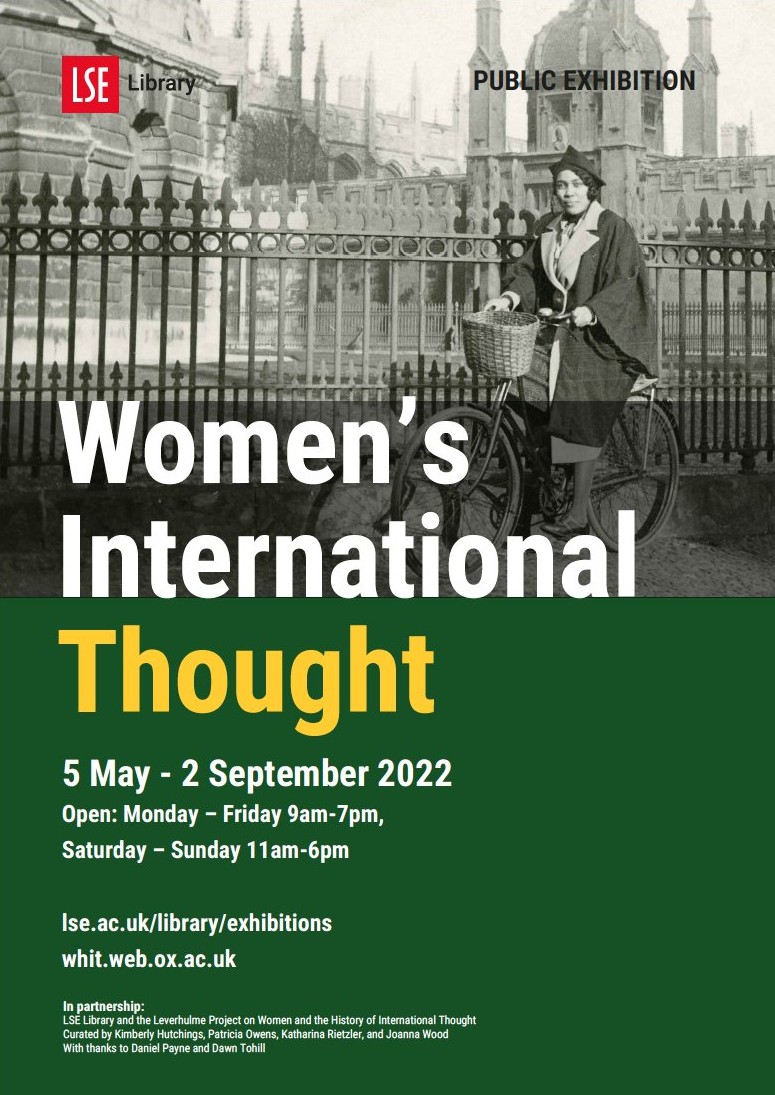
This exhibition was part of the University of Oxford Leverhulme Trust funded project Women and the History of international Thought, curated by Patricia Owens, Katharina Rietzler, Kimberly Hutchings, and Joanna Wood.
Introduction
This exhibition explored the ideas, genres, and contexts of women’s international thinking in Britain and the United States in the first half of the twentieth century. A period of colonial and anti-colonial struggles, superpower rivalry, racial, class and gendered conflicts, the legacies of these times – and these women’s ideas - are still with us today. Curated by the Leverhulme Project on Women and the History of International Thought, the following exhibition explores women international thinkers and their work at a fundamental moment in the imagining of international relations.
Selected images and quotes from our curators
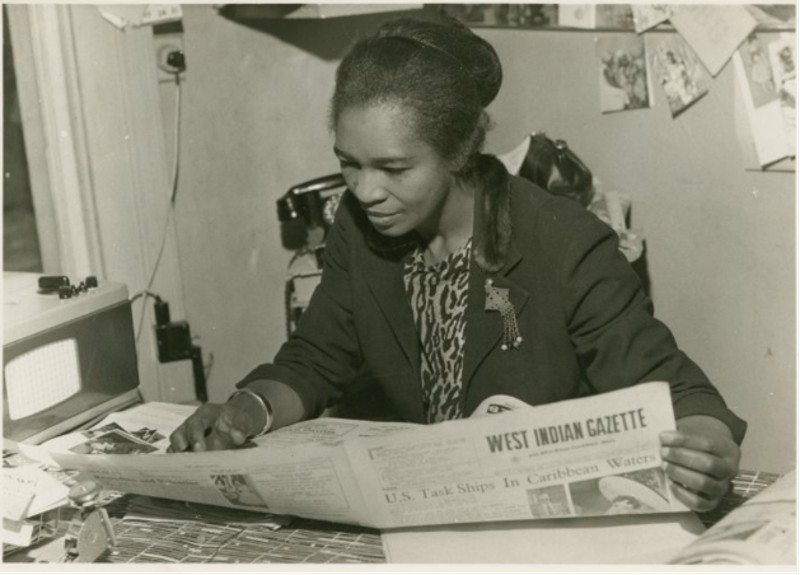
I love this image of Claudia Jones reading a copy of the West Indian Gazette, which she founded in 1958 and edited after she was deported to Britain from the United States because of her radical left and anti-racist work. It’s included in a display where we feature the work of four leading Black internationalist thinkers of the early to mid-twentieth century, Amy Ashwood Garvey, Una Marson, Merze Tate, and Claudia Jones.
Patricia Owens, Professor of International Relations, Oxford University
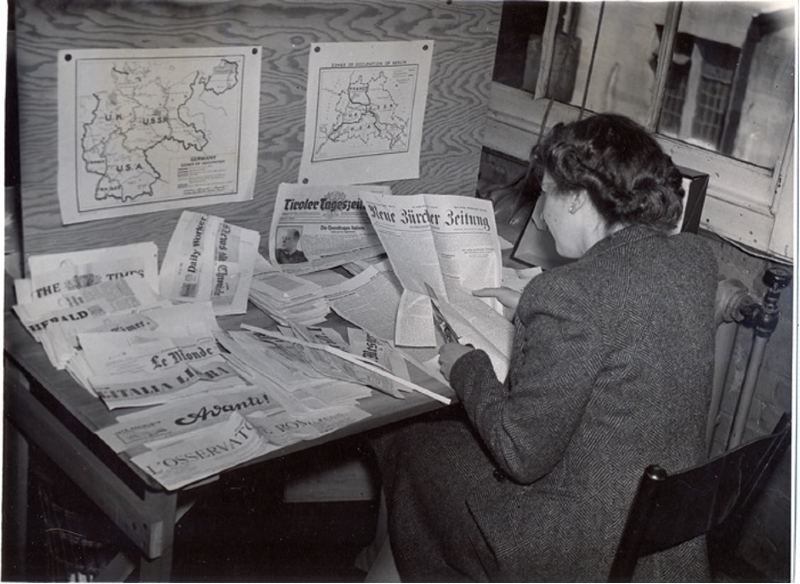
This image was taken soon after World War II, in the newspaper clippings department of the foreign affairs think tank Chatham House. The unknown woman in the image is cutting out a newspaper column, which would then be catalogued and filed away, delivering the raw material for one of Chatham House’s many publications. The mostly male authors who published surveys and books on international affairs could not have completed their work without this crucial process of mining the ‘raw facts’. I am fond of this image for many reasons, but not least because it reminds me of the historian Gerda Lerner’s demand that the recovery of women’s intellectual history cannot focus on exceptional women only – the unexceptional ones are just as important.
Katharina Rietzler, Senior Lecturer in American History, University of Sussex
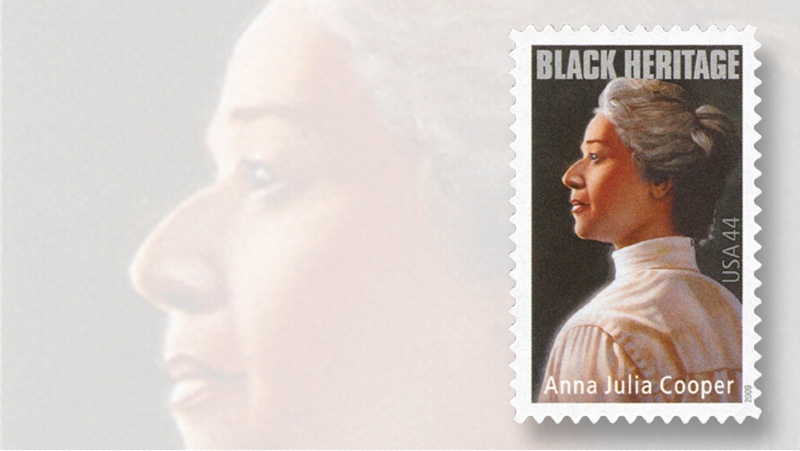
This is my favourite image from the exhibition, included in the exhibit on Women and the Canon of International Thought. It is a US postage stamp, produced in 2009 as part of a series celebrating black heritage. It is a brilliant picture, with Anna Julia Cooper looking commandingly into the distance, but also a stark reminder of how recently Cooper’s work gained any recognition at all, let alone as a contribution to international thought. It is sobering to note that Cooper’s brilliant Sorbonne PhD thesis, Slavery and the French Revolutionists, which she had to defend to a white supremacist examiner, was only published 60 years after she was awarded her doctorate and more than twenty years after her death.
Kimberly Hutchings, Professor of International Politics, Queen Mary University of London
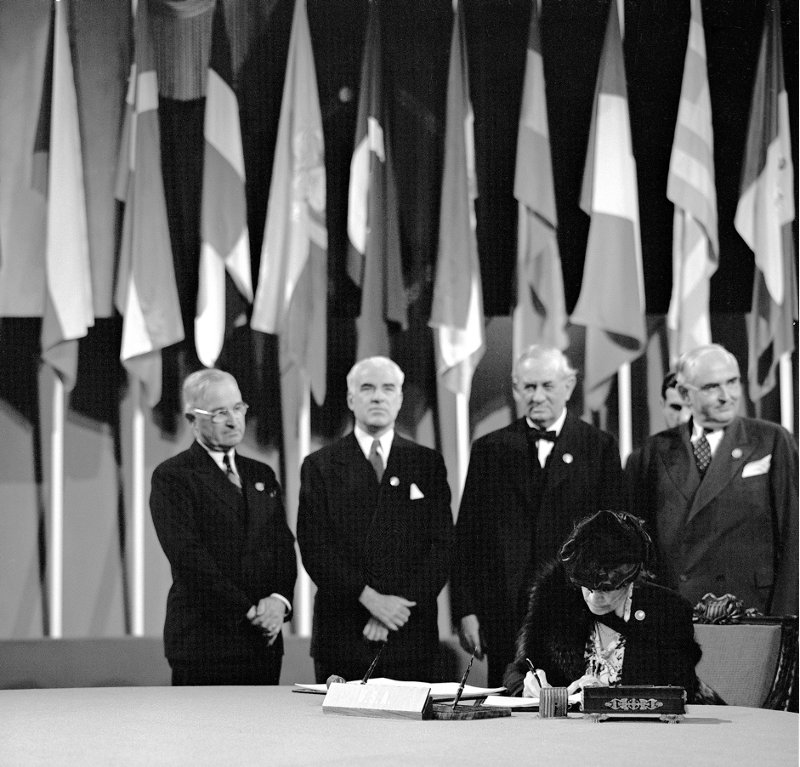
This photo of Virginia Gildersleeve, Dean of Barnard College, signing the United Nations Charter in 1945 surrounded by men, for me really captures the heights and contradictions of the interwar world of women’s international thought. Simultaneously prominent and minoritised, educated women in the US made foundational contributions to international relations through the interrelated, predominantly white worlds of the academy and women-led organisations. Alongside Gildersleeve, the only woman US delegate, multiple women served as technical experts, advisors and assistants to the US delegation, many holding PhDs and academic jobs.
Joanna Wood, DPhil Candidate in International Relations, University of Oxford
Image credits
Claudia Jones image courtesy of the Schomburg Center for Research in Black Culture.
Clippings image courtesy of Chatham House, the Royal Institute of International Affairs.
Stamp image courtesy of US Postal Service, Black Heritage Series, 44-cent Anna Julia Cooper Commemorative Stamp, Issued 2009. Further details of the stamp.
UN Charter image courtesy of UN Photo/McCreary.
Take-down policy
View our take-down policy.
Visitors’ comments
A fascinating exploration of women and international relations. Love the examples and photographs. Thank you for the excellent podcasts to accompany the exhibition on the website.
Small exhibition, but worth the two mile walk from London Liverpool Station. Going to learn more about Merze Tate now
I might apply to LSE, especially after seeing this exhibition – 10 year old girl. Cya in 10 years
This exhibition has further opened my eyes to the amount of positive change and impact that women have contributed to society. As a black women, it has shown me change that people like me had made in history and still continue to make, from anti colonial internationalism to journalism this raised so many global issues. I am a strong black women. My gender and race do not deprive me of my abilities. I too can create change.
Interested in finding out more?